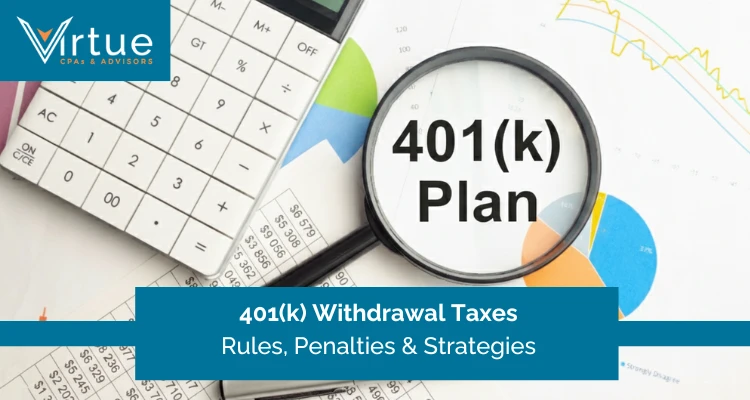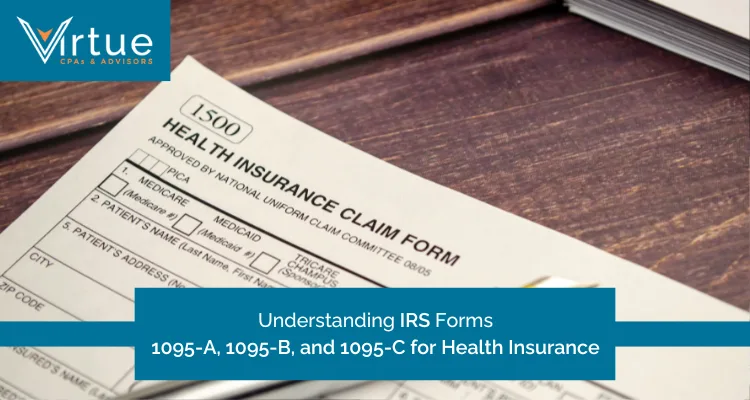Introduction
Picture this — You're sitting on a beach, sipping a refreshing drink, and enjoying your golden years without a financial worry in the world.
Sounds pretty great, right?
Well, that dream can become a reality if you start planning for your retirement today.
When it comes to retirement planning, two of the most popular options you'll come across are the 401k plan and the IRA retirement plan.
But here's the million-dollar question (pun intended) — which one is right for you?
In this article, we will compare 401(k) vs IRA and help you identify which retirement plan is best for you.
What is 401(k)?
Let's start with the 401k plan. You've probably heard this term tossed around at work or in financial discussions, but what exactly is it?
A 401(k) is like a special piggy bank for your retirement that's set up by your employer.
It's named after a section of the tax code (exciting stuff, right?), but don't let that bore you.
The important thing is that it's a powerful tool to help you save for your golden years.
Types of 401(k) Plans
There are two main flavors of 401(k)s:
- Traditional 401(k) — This is the most common type. You put money in before taxes are taken out of your paycheck, which can lower your taxable income now.
- Roth 401(k) — With this type, you pay taxes on the money now, but you get to enjoy tax-free withdrawals in retirement.
Key Features of 401(k)
Now, let's look at what makes a 401(k) special:
- Employer sponsorship — Your company sets up and manages the plan for you. It's like they're giving you a helping hand with your retirement savings.
- Contribution limits — In 2024, you can contribute up to $23,000 per year if you're under 50. If you're 50 or older, you get to add an extra $7,500 as a "catch-up" contribution.
- Employer matching — Many employers will match a portion of what you put in. It's like getting free money for your retirement!
- Investment options — Your employer will offer plenty of investment choices, usually including mutual funds and target-date funds.
Tax implications of 401(k)
The way your 401(k) is taxed depends on whether it's traditional or Roth:
- Traditional 401(k) — You don't pay taxes on the money you contribute now, but you'll pay taxes when you withdraw it in retirement.
- Roth 401(k) — You pay taxes on your contributions now, but your withdrawals in retirement are tax-free.
401(k) Withdrawal Rules and Penalties
The money in your 401(k) is meant for retirement.
So, if you try to take it out before you're 59½ years old, you'll usually have to pay a 10% penalty on top of any taxes owed.
There are some exceptions, but in general, it's best to let that money grow until retirement.
What is an IRA?
The IRA investment plan stands for Individual Retirement Account.
As the name suggests, it's a retirement savings account that you open and manage on your own.
Types of IRAs
There are several types of IRAs, but we'll focus on the most common ones:
- Traditional IRA : Similar to a traditional 401(k), you contribute pre-tax dollars and pay taxes when you withdraw in retirement.
- Roth IRA : You contribute after-tax dollars, but your withdrawals in retirement are tax-free.
- SEP IRA : This is for self-employed individuals or small business owners.
- SIMPLE IRA : This is a type of employer-sponsored IRA for small businesses.
Key Features of IRA
IRAs have some unique characteristics:
- Individual accounts : Unlike 401(k)s, IRAs are not tied to your employer. You open and manage them yourself.
- Contribution limits : For 2024, you can contribute up to $7,000 per year if you're under 50, and $8,000 if you're 50 or older.
- Investment flexibility : IRAs typically offer a wider range of investment options compared to 401(k)s.
Tax Implications of IRA
The tax treatment of IRAs depends on the type:
- Traditional IRA : Contributions may be tax-deductible (depending on your income and whether you have a workplace retirement plan), and you pay taxes on withdrawals in retirement.
- Roth IRA : Contributions are made with after-tax dollars, but qualified withdrawals in retirement are tax-free.
IRA Withdrawal Rules and Penalties
Like 401(k)s, IRAs have rules about when you can withdraw your money.
For traditional IRAs, you'll face a 10% penalty if you withdraw before age 59½, with some exceptions.
Roth IRAs, on the other hand, are a bit more flexible — you can withdraw your contributions (but not earnings) at any time without penalty.
Difference Between Traditional IRA and Roth IRA
Learning about the difference between a Traditional IRA and a Roth IRA is important as it can have a big impact on your retirement savings strategy.
Contribution phase
There are several types of IRAs, but we'll focus on the most common ones:
- Income limits : Roth IRAs have income limits that determine whether you can contribute directly. For 2024, if you're single and your modified adjusted gross income (MAGI) is $146,000 or more, you can't contribute to a Roth IRA. Traditional IRAs don't have income limits for contributions, but your ability to deduct contributions may be limited if you have a workplace retirement plan.
- Tax deductibility : Contributions to a traditional IRA may be tax-deductible, depending on your income and whether you have a workplace retirement plan. Roth IRA contributions are never tax-deductible.
Growth phase
Both types of IRAs allow your investments to grow without being taxed each year. The difference comes in the withdrawal phase.
Withdrawal phase
Taxation of withdrawals: With a traditional IRA, you pay taxes on your withdrawals in retirement. With a Roth IRA, qualified withdrawals are tax-free.
Furthermore, traditional IRAs require you to start taking RMDs at age 73 (as of 2024). Roth IRAs don't have RMDs during the original owner's lifetime.
Eligibility criteria
You can contribute to a traditional IRA at any age as long as you have earned income. For Roth IRAs, you must have earned income and be below the income limits mentioned earlier.
Conversion options
You can convert a traditional IRA to a Roth IRA, regardless of your income. This is known as a Roth conversion and can be a powerful strategy for some people.
401(k) vs IRA: Key Differences
Now that we've covered both 401(k)s and IRAs in detail, let's put them side by side to see how they stack up.
Here's a handy table that summarizes the key differences between these two retirement savings plans:
This table gives you a bird's-eye view of the IRA vs 401k comparison.
But remember, the devil is in the details, and your personal situation will play a big role in determining which option (or combination of options) is best for you.
| Feature | 401(k) | IRA |
|---|---|---|
| Sponsorship | Employer-sponsored | Individually opened and managed |
| Contribution limits (2024) | $23,000 ($30,500 if 50+) | $7,000 ($8,000 if 50+) |
| Catch-up contributions | $7,500 (age 50+) | $1,000 (age 50+) |
| Employer matching | Often available | Not applicable |
| Investment options | A limited menu that is chosen by the employer | Wide range of options |
| Loan provisions | May be available | Not allowed |
| Early withdrawal penalties | 10% before age 59½ (with exceptions) | 10% before age 59½ for traditional IRAs (with exceptions); contributions can be withdrawn penalty-free from Roth IRAs |
| Required Minimum Distributions (RMDs) | Required at age 73 for both traditional and Roth 401(k)s | Required at age 73 for traditional IRAs; no RMDs for Roth IRAs during the owner's lifetime |
| Rollover options | Can be rolled over to an IRA | Can be rolled over to another IRA; can only be rolled into a 401(k) if the plan allows it |
This table gives you a bird's-eye view of the IRA vs 401k comparison.
But remember, the devil is in the details, and your personal situation will play a big role in determining which option (or combination of options) is best for you.
Factors to Consider for Choosing Between 401(k) and IRA
Now that we've laid out the basics of 401(k)s and IRAs, let's discuss the factors you should consider when choosing between 401(k) vs IRA.
Remember, this isn't a one-size-fits-all decision. Your personal circumstances will play a big role in determining the best approach for you.
That said, here are the key factors you should consider:
1. Employment status
Your employment situation can significantly influence your retirement savings options:
- Full-time employees with employer-sponsored plans : If you have access to a 401(k) with an employer match, it often makes sense to contribute at least enough to get the full match before considering an IRA.
- Self-employed individuals or small business owners : You might consider a SEP IRA or Solo 401(k), which offer higher contribution limits than traditional or Roth IRAs.
- Part-time workers or gig economy participants : If you don't have access to a 401(k), an IRA might be your best bet for tax-advantaged retirement savings.
2. Employer Matching
If your employer offers a 401(k) match, it's essentially free money for your retirement.
Here's what to consider:
- Availability and extent of employer match: Some employers match a percentage of your contributions, up to a certain limit. For example, they might match 50% of your contributions up to 6% of your salary.
- Vesting schedule: Some employers require you to work for a certain number of years before you're fully "vested" in their matching contributions.
- Maximizing employer contributions: It's often wise to contribute at least enough to your 401(k) to get the full employer match before considering other retirement savings options.
3. Investment Options and Flexibility
The range of investment options can vary significantly between 401(k)s and IRAs:
- 401(k) investment menu vs. IRA investment freedom: 401(k)s typically offer a limited menu of investment options chosen by your employer, while IRAs give you the freedom to invest in a wide range of stocks, bonds, mutual funds, and ETFs.
- Target-date funds and managed accounts in 401(k)s: Many 401(k)s offer these "set it and forget it" options, which can be great for hands-off investors.
- Self-directed investing in IRAs : If you're a more active investor, an IRA might give you the flexibility you crave.
4. Fees and Expenses
Here are the fees and expenses you can expect when investing in 401(k) and IRA plans.
- Administrative fees in 401(k) plans: Some 401(k) plans charge fees for plan administration.
- Investment expense ratios: These are the ongoing fees charged by mutual funds and ETFs. Both 401(k)s and IRAs have these, but you might have more low-cost options in an IRA.
- Account maintenance fees for IRAs: Some IRA providers charge annual account fees, though many don't.
5. Current and Future Tax Situations
Your tax situation now and in retirement can impact which type of account is best for you:
- Current tax bracket vs. expected retirement tax bracket: If you expect to be in a lower tax bracket in retirement, a traditional 401(k) or IRA might make sense. If you expect to be in a higher bracket, consider Roth options.
- Benefits of tax-deferred vs. tax-free growth: Traditional accounts give you a tax break now, while Roth accounts offer tax-free withdrawals in retirement.
- State tax considerations: Some states offer additional tax benefits for certain types of retirement accounts.
6. Income Levels and Contribution Limits
Your income can affect your ability to contribute to certain types of accounts:
- High-income earners and 401(k) advantages: There are no income limits for 401(k) contributions, making them attractive for high earners who might be phased out of Roth IRA contributions.
- IRA contribution limits and income phase-outs: Roth IRA contributions are phased out at higher income levels, and the deductibility of traditional IRA contributions may be limited if you have a workplace retirement plan.
- Backdoor Roth IRA strategy for high earners: This involves making a non-deductible contribution to a traditional IRA and then converting it to a Roth IRA.
7. Age and Time Until Retirement
Your age and how close you are to retirement can influence your choice of retirement plan:
- Catch-up contributions for those 50 and older: Both 401(k)s and IRAs allow additional "catch-up" contributions for those 50 and older.
- Roth IRA advantages for younger investors: Younger investors might benefit more from Roth accounts, as they have more time for tax-free growth.
- 401(k) considerations for late-career savers: The higher contribution limits of 401(k)s can be beneficial for those trying to boost their savings in the years leading up to retirement.
8. Desired Withdrawal Flexibility
Different accounts have different rules about accessing your money:
- 401(k) loan options: Many 401(k) plans allow you to borrow from your account, which isn't an option with IRAs.
- IRA early withdrawal exceptions: IRAs have more exceptions to the early withdrawal penalty than 401(k)s, such as using the money for a first-time home purchase or higher education expenses.
- Roth IRA contribution withdrawal rules: You can withdraw your Roth IRA contributions (but not earnings) at any time without penalty, which can provide some flexibility.
9. Estate Planning and Legacy Goals
If leaving money to heirs is important to you, consider these factors:
- Inherited 401(k) vs. Inherited IRA rules: The rules for inheriting these accounts can differ, particularly for non-spouse beneficiaries.
- Stretch IRA potential for beneficiaries: While recent legislation has limited this strategy, there are still some planning opportunities.
- Roth accounts for tax-free wealth transfer: Roth accounts can be an effective way to leave tax-free money to your heirs.
10. Simplicity vs Complexity in Management
Finally, you need to consider how hands-on you want to be with your retirement savings:
- Ease of 401(k) automatic contributions: 401(k)s make saving easy with automatic payroll deductions.
- Consolidation of multiple retirement accounts: Having multiple accounts can be more complex to manage.
- Record-keeping and reporting requirements: IRAs might require more active management and record-keeping on your part.
Strategies for Maximizing Retirement Savings
Let's talk about some strategies to maximize your retirement savings.
After all, the goal isn't just to choose the right account, but to make the most of it!
Combining 401(k) and IRA contributions
Who says you have to choose just one? Many people find that using both a 401(k) and an IRA gives them the best of both worlds.
Here's how you might approach this:
- Prioritizing employer match in 401(k): If your employer offers a 401(k) match, contribute at least enough to get the full match. This is essentially free money!
- Using IRA for additional tax-advantaged savings: If you've maxed out your 401(k) match and still have money to save, consider contributing to an IRA. This can give you access to a wider range of investment options and potentially more tax benefits.
Roth vs Traditional Allocation Strategy
Diversifying between Roth and traditional accounts can be a smart move:
- Tax diversification in retirement: By having both Roth and traditional accounts, you give yourself flexibility in managing your tax situation in retirement.
- Hedging against future tax rate changes: No one knows what tax rates will be in the future. Having both types of accounts helps protect you against potential changes.
Leverage HSAs for Retirement Savings
If you have a high-deductible health plan, don't overlook the power of a Health Savings Account (HSA).
These accounts offer triple tax benefits: tax-deductible contributions, tax-free growth, and tax-free withdrawals for qualified medical expenses.
After age 65, you can withdraw funds for any purpose without penalty (though you'll pay income tax on non-medical withdrawals).
Consider After-Tax Contributions to 401(k)
If you're a high earner and have maxed out your traditional or Roth 401(k) contributions, you might be able to make additional after-tax contributions to your 401(k).
While these don't provide an immediate tax benefit, they can be a way to save more in a tax-advantaged account.
Some plans even allow you to convert these after-tax contributions to Roth contributions, a strategy known as the "mega backdoor Roth."
Periodic Review and Rebalancing of Investments
When it comes to your retirement strategy, don’t just set it and forget it.
Regularly reviewing and rebalancing your retirement accounts is crucial.
Here’s how you can do it:
- Review your investment allocation: As you get closer to retirement, you might want to adjust your mix of stocks and bonds to better align with your risk tolerance and time horizon.
- Rebalance your portfolio: Over time, some investments may grow faster than others, throwing off your intended asset allocation. Rebalancing helps you maintain your desired risk level.
- Stay informed about changes: Retirement account rules and contribution limits can change. Stay informed so you can take advantage of new opportunities.
Remember, these strategies are general guidelines. Your specific situation might call for a different approach. Don't hesitate to consult with a financial advisor like VirtueCPA to create a personalized retirement savings strategy.
Final Verdict!
What's the bottom line? Which one should you choose?
Well, the truth is, there's no one-size-fits-all answer.
If you're trying to decide between a 401(k) and an IRA, here's a simple framework to guide your decision:
1. Does your employer offer a 401(k) with matching contributions?
If yes, contribute at least enough to get the full match. This is essentially free money you don't want to leave on the table.
2. Have you maxed out your 401(k) match but still have money to save?
Consider opening an IRA. This gives you more control over your investments and potentially lower fees.
3. Have you maxed out your IRA contribution ($7,000 in 2024, or $8,000 if you're 50 or older) and still have more to save?
Go back to your 401(k) and contribute up to the annual limit ($23,000 in 2024, or $30,500 if you're 50 or older).
4. If you've maxed out both your 401(k) and IRA and still have money to save,
consider other tax-advantaged options like a Health Savings Account (HSA) if you're eligible, or a taxable brokerage account.
Remember, the IRA vs 401k debate isn't always an either-or proposition. Many people find that using both types of accounts gives them the most flexibility and tax advantages.
For young savers just starting out, a Roth IRA or Roth 401(k) can be particularly attractive. You'll pay taxes on your contributions now, when your tax rate may be lower, and enjoy tax-free withdrawals in retirement.
For high earners, maxing out a traditional 401(k) can provide significant tax savings now, while still allowing for Roth contributions through a backdoor Roth IRA strategy.
Self-employed individuals or small business owners might find that a SEP IRA or Solo 401(k) offers the best combination of high contribution limits and flexibility.
The most important verdict?: Start saving for retirement as early as possible, save consistently, and take full advantage of any employer-matching contributions.
Whether you choose a 401(k), an IRA, or both, you're taking a crucial step toward securing your financial future.
Remember, personal finance is just that - personal. Your ideal retirement savings strategy will depend on your unique circumstances, goals, and risk tolerance.
Conclusion
It's clear that both of these retirement savings vehicles offer powerful benefits.
The 401k plan provides the advantage of higher contribution limits and potential employer matching, while the IRA retirement plan offers greater investment flexibility and potential tax advantages.
While this guide provides a comprehensive overview, retirement planning can be complex and ever-changing. Tax laws evolve, contribution limits adjust, and your personal financial situation may shift over time. That's where professional guidance can be invaluable.
At Virtue CPAs, we specialize in helping individuals like you navigate the intricacies of retirement planning.
We understand that every individual's financial journey is unique, and we're committed to providing personalized, expert advice to help you achieve your retirement dreams.
Ready to take the next step in securing your financial future? Contact Virtue CPA today for a consultation.
FAQs
Yes, you can roll a 401(k) into an IRA. This is common when you leave a job and want to consolidate your retirement savings. You can roll your 401(k) into either a traditional IRA or a Roth IRA, though rolling into a Roth IRA would require paying taxes on the rolled-over amount.
Rolling an IRA into a 401(k) is also possible, but less common. Not all 401(k) plans accept incoming rollovers, so you'd need to check with your plan administrator. If it is allowed, you can only roll a traditional IRA into a 401(k), not a Roth IRA.
Both IRAs and 401(k)s have potential disadvantages to consider:
IRA disadvantages:
Lower contribution limits compared to 401(k)s
No employer-matching contributions
Income limits on Roth IRA contributions and traditional IRA tax deductions
Requires more self-management and investment decisions
401(k) disadvantages:
Limited to what your employer offers - you may have fewer investment options
Potentially higher fees, depending on the plan
Less control over your investments
May have to wait for a vesting period for employer contributions
Usually have fewer penalty-free early withdrawal options compared to IRAs







